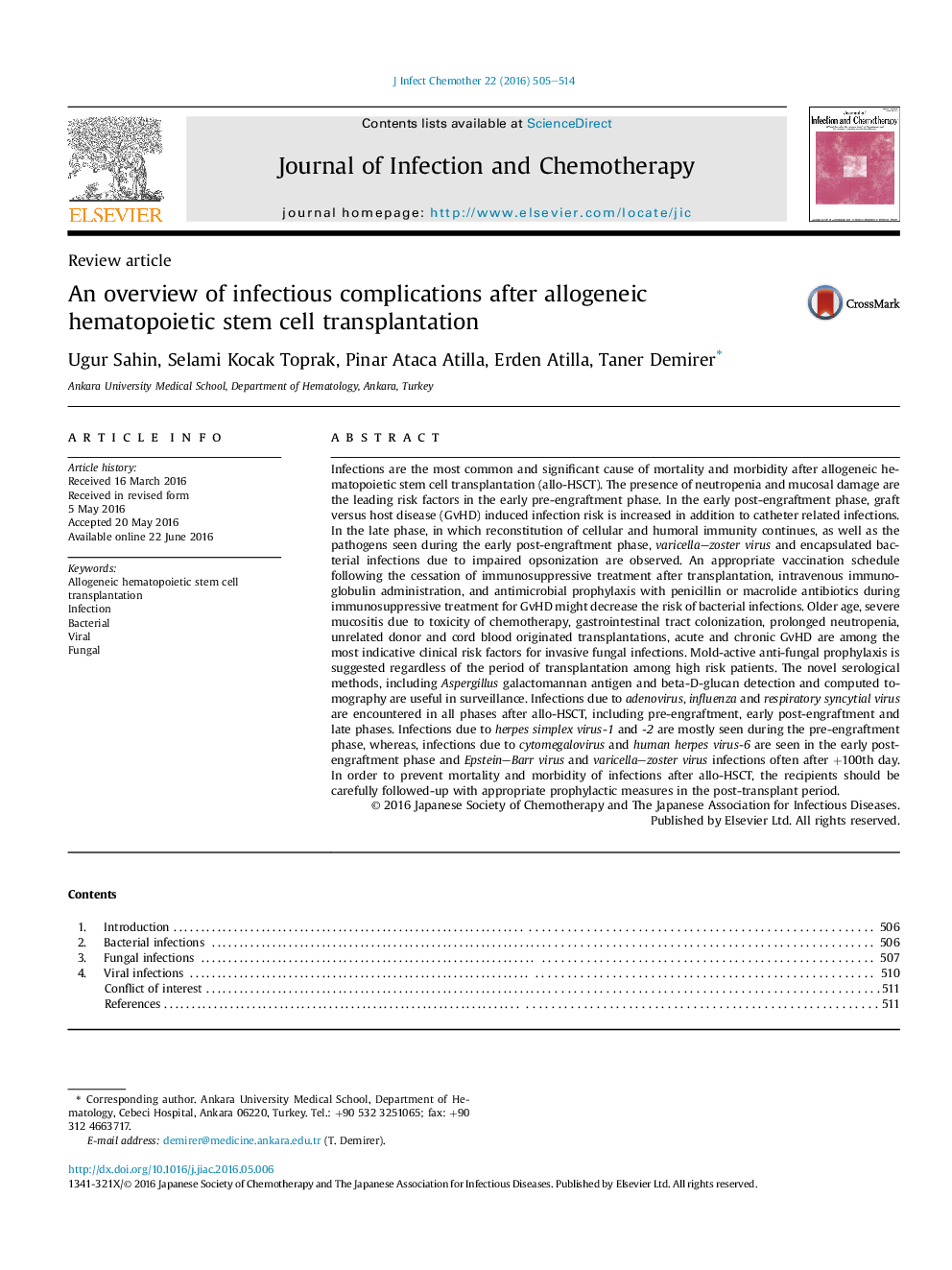| کد مقاله | کد نشریه | سال انتشار | مقاله انگلیسی | نسخه تمام متن |
|---|---|---|---|---|
| 3376665 | 1219920 | 2016 | 10 صفحه PDF | دانلود رایگان |
Infections are the most common and significant cause of mortality and morbidity after allogeneic hematopoietic stem cell transplantation (allo-HSCT). The presence of neutropenia and mucosal damage are the leading risk factors in the early pre-engraftment phase. In the early post-engraftment phase, graft versus host disease (GvHD) induced infection risk is increased in addition to catheter related infections. In the late phase, in which reconstitution of cellular and humoral immunity continues, as well as the pathogens seen during the early post-engraftment phase, varicella–zoster virus and encapsulated bacterial infections due to impaired opsonization are observed. An appropriate vaccination schedule following the cessation of immunosuppressive treatment after transplantation, intravenous immunoglobulin administration, and antimicrobial prophylaxis with penicillin or macrolide antibiotics during immunosuppressive treatment for GvHD might decrease the risk of bacterial infections. Older age, severe mucositis due to toxicity of chemotherapy, gastrointestinal tract colonization, prolonged neutropenia, unrelated donor and cord blood originated transplantations, acute and chronic GvHD are among the most indicative clinical risk factors for invasive fungal infections. Mold-active anti-fungal prophylaxis is suggested regardless of the period of transplantation among high risk patients. The novel serological methods, including Aspergillus galactomannan antigen and beta-D-glucan detection and computed tomography are useful in surveillance. Infections due to adenovirus, influenza and respiratory syncytial virus are encountered in all phases after allo-HSCT, including pre-engraftment, early post-engraftment and late phases. Infections due to herpes simplex virus-1 and -2 are mostly seen during the pre-engraftment phase, whereas, infections due to cytomegalovirus and human herpes virus-6 are seen in the early post-engraftment phase and Epstein–Barr virus and varicella–zoster virus infections often after +100th day. In order to prevent mortality and morbidity of infections after allo-HSCT, the recipients should be carefully followed-up with appropriate prophylactic measures in the post-transplant period.
Journal: Journal of Infection and Chemotherapy - Volume 22, Issue 8, August 2016, Pages 505–514
